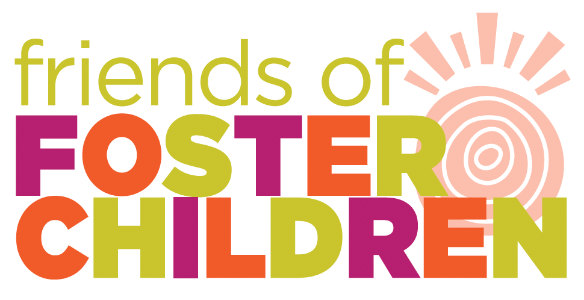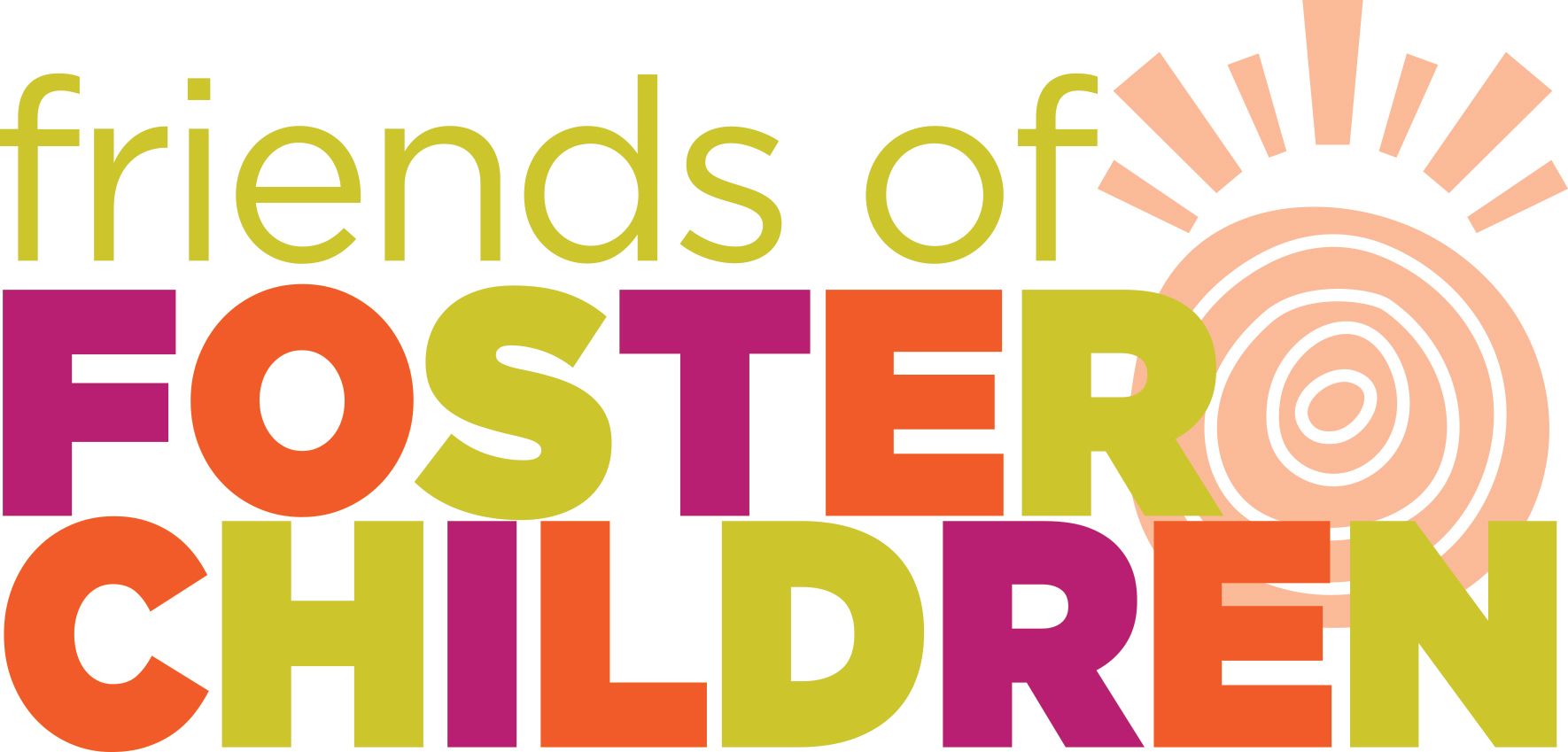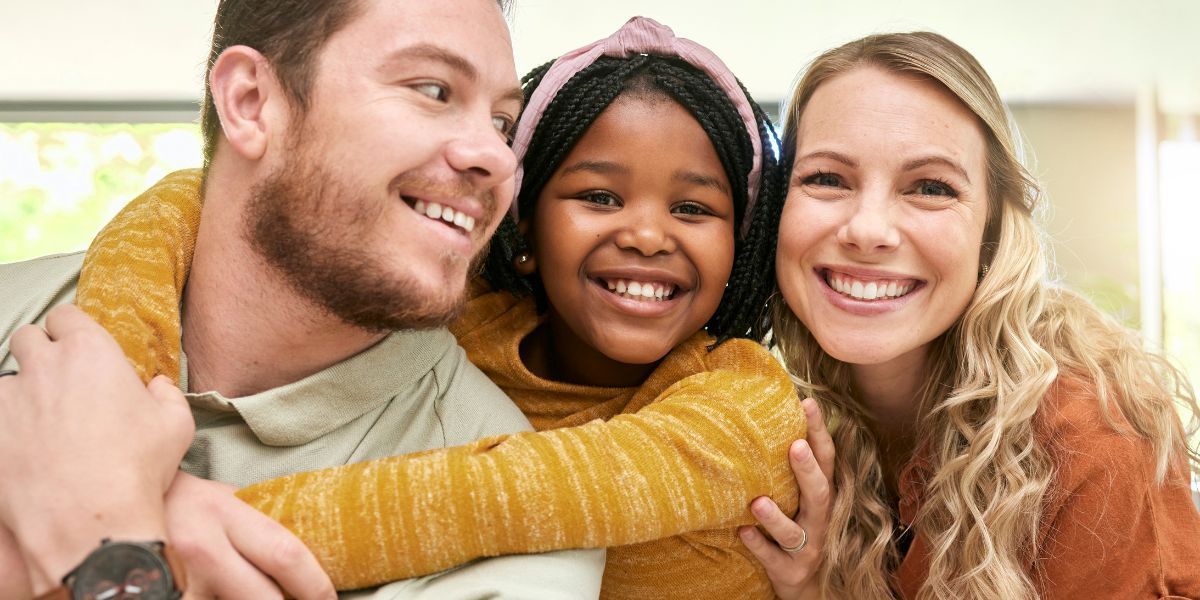Fostering Happy Childhood Stories Blog

Each year, thousands of young people transition from foster care into adulthood, a milestone known as “aging out.” At 18, many face the challenge of building independence without the consistent support of family. While this time can be difficult, it also opens the door to new opportunities. Across the country, programs and resources exist to help with housing, education, career planning, and life skills. These supports recognize that, like all young adults, those leaving foster care need guidance and encouragement as they begin their journey. Here in our community, Friends of Foster Children offers Navigating Adulthood, a program designed specifically for teens preparing to age out of foster care. Led by Serenity—a young woman who aged out of herself—the program provides mentorship, resources, and practical life skills. The program covers topics such as budgeting, cooking, communication, and time management, giving participants the confidence to move forward. Serenity’s leadership makes the program especially meaningful. Having walked the same path, she understands the challenges these young adults face and models what’s possible with support and determination. Aging out is not just about foster care; it’s about stepping into adulthood prepared and supported. With programs like Navigating Adulthood, young people are equipped to build stability, pursue their goals, and create fulfilling futures. Community members can play a role, too, through mentoring, volunteering, or supporting programs like this one. Together, we can help ensure that when young people age out of foster care, they don’t face the journey alone. Help caregivers provide loving homes for children in need. Your donation makes a difference today.
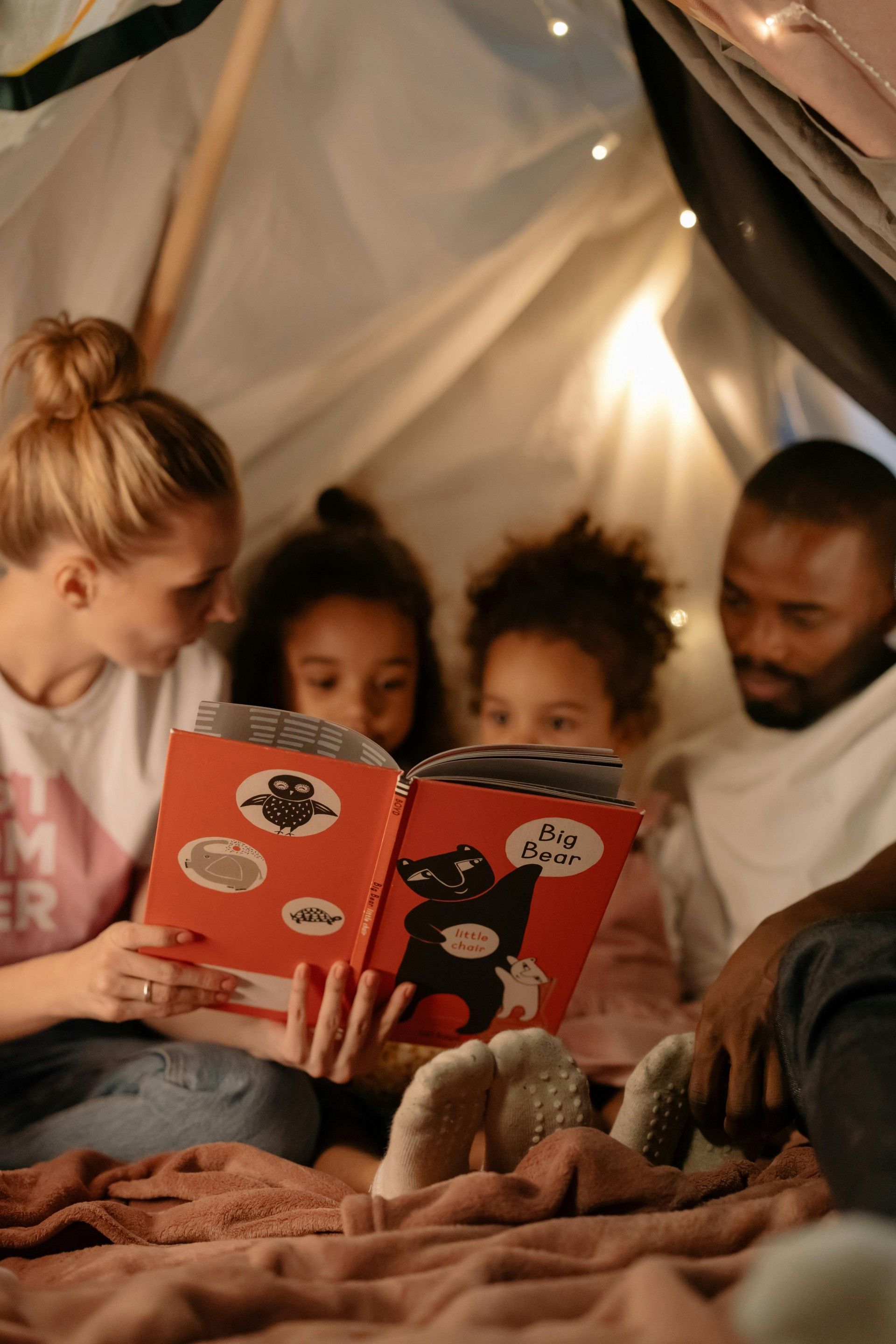
Reunification is the process of returning a child in foster care to their parents or primary guardians. It is a slow process guided by courts, social workers, and support teams who all want one thing: to make sure a child is safe, loved, and cared for. Most children in foster care eventually return to their birth families. In fact, according to the U.S. Department of Health and Human Services, “Nearly 50% of children who leave foster care do so through reunification with their parents or primary caregivers.” That’s hundreds of thousands of families each year who are given a second chance — who face their struggles, make changes, and do the hard work of reuniting with their children. How Does Reunification Work? Reunification is a structured process that involves several key steps: 1. Family Assessment and Case Plan Once a child is placed in foster care, a caseworker conducts a full assessment of the situation. The court then outlines a family case plan — a set of goals and actions the parent(s) must complete to regain custody. These may include: Attending parenting classes Maintaining sobriety and completing a rehabilitation program Finding stable housing and employment Participating in therapy or counseling Complying with regular court check-ins and supervised visits This plan is tailored to the family's specific circumstances and is monitored closely by child welfare professionals. 2. Supervised Visitation During this period, parents usually begin with supervised visitation — scheduled times when they can see their children under the supervision of a social worker. These visits often happen in a neutral setting, such as visitation centers. Over time, as trust and progress build, supervised visits may evolve into unsupervised visits, overnight stays, and eventually trial home visits — all building blocks towards reunification. 3. Ongoing Support Reunification isn’t about checking off boxes — it’s about meaningful change. That’s why families receive continued support throughout the process, including: Therapy (individual or family) Substance abuse recovery programs Parent coaching Housing and financial assistance Help with transportation or childcare The goal is not just to bring the child home, but to create an environment where they can thrive long-term. 4. Final Reunification Decision Once the family has made substantial progress, and the child’s well-being can be ensured, the court may grant legal reunification. This means the child is no longer under foster care jurisdiction and can remain with their family permanently. But even after reunification, many families continue receiving services to reduce the risk of re-entry into care and promote ongoing success. What Does Reunification Look Like for a Child? Reunification is a deeply emotional and complex experience for a child. Foster parents, caseworkers, and birth families must work together to support the child’s emotional transition. When done right, reunification can be a beautiful reminder that healing is possible, that people can grow and change, and that love can endure hardship. Why Reunification Matters When we give parents the tools they need to succeed, we don’t just reunite families — we break cycles of trauma. We give children the chance to reconnect with their roots and culture. How Can Communities Help? Reunification isn’t just the job of child welfare agencies — it’s the work of entire communities. Here's how we can help: Employers can offer second chances to parents striving to rebuild their lives Churches, nonprofits (like Friends of Foster Children), and community groups can provide parenting classes, recovery support, and mentorship Neighbors and friends can offer rides, meals, or childcare during tough times Policy advocates can push for funding in prevention and family preservation programs When we invest in families before a crisis happens — and support them after — we change the entire story. So, can foster children be reunified? Yes. Reunification is one of the most beautiful expressions of hope in the foster care system. It says, we believe people can grow, children deserve the best, and we believe in healing. It doesn’t happen easily or quickly. It takes hard work, vulnerability, accountability, and compassion. But when it does happen, it’s a victory worth celebrating — not just for the family, but for all of us. Because every child deserves the chance to pursue a happy childhood. Help caregivers provide loving homes for children in need. Your donation makes a difference today.
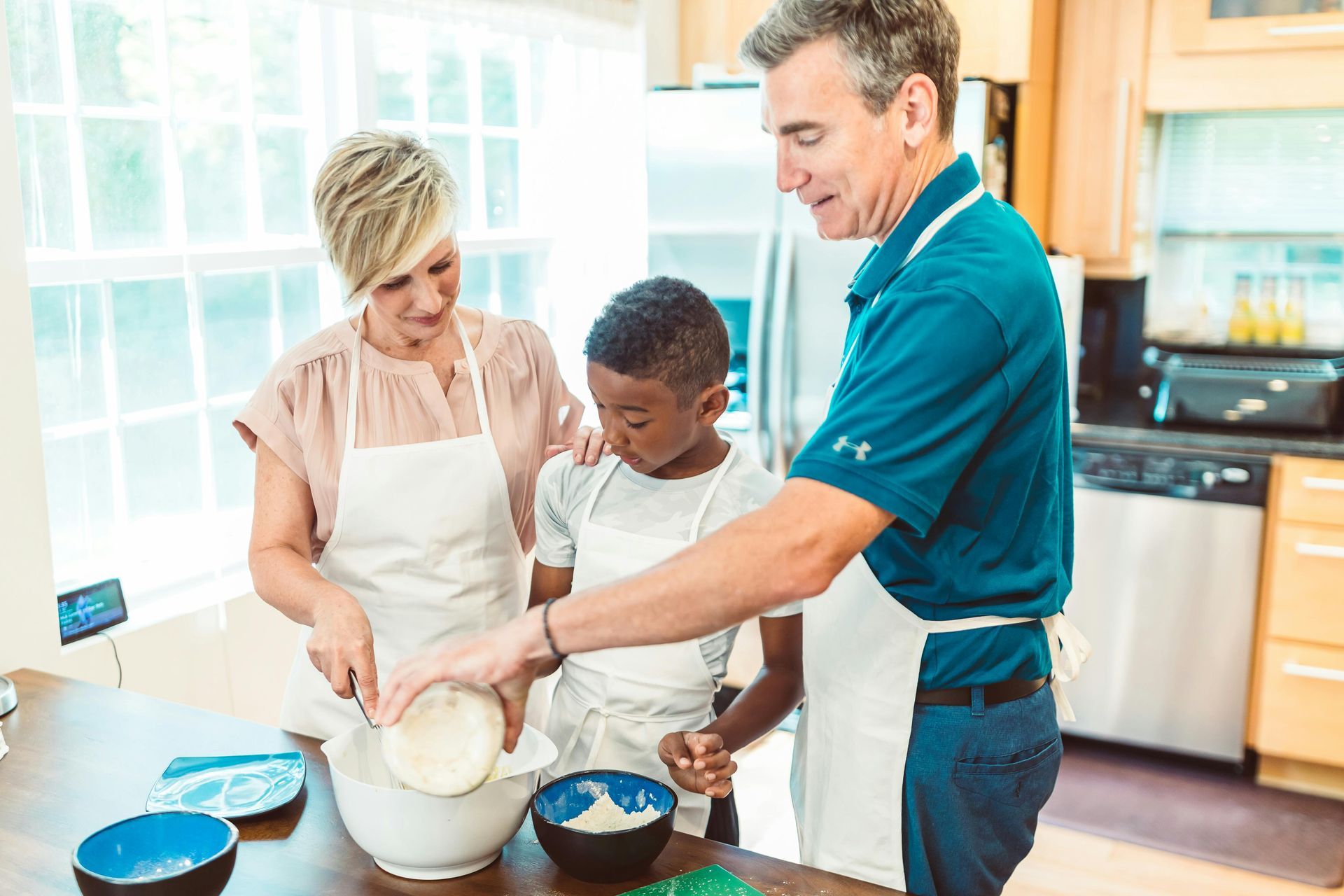
A Look at the Homes, Hearts, and Hope That Shelter Children in Care When a child is removed from their home, one of the first and most important questions becomes: where will they stay? Foster kids can stay in a variety of settings depending on their age, needs, family situation, and availability of caregivers. Each placement is thoughtfully considered, and the goal is always to place the child in the least restrictive, most loving environment possible. 1. Relative/Kinship Care—Placing the child with a relative or close family friend. Did you know that more than 30% of children in foster care in the U.S. are placed with relatives/kin? Children feel more secure when surrounded by familiar people, culture, and routines. Kin placements give the child a sense of familiarity and can help make reunification easier. These caregivers often act quickly and selflessly to provide stability, sometimes without much notice. 2. Licensed Foster Homes - People who have gone through background checks, home studies, training, and certification to become non-relative caregivers. Foster families provide a nurturing home with day-to-day care: meals, transportation, homework help, and any other support a child would need. Foster families can come in all shapes and sizes: Single parents, couples, and families with or without kids. 3. Group Homes or Residential Treatment Centers - Designed for children with complex behavioral and emotional needs. These are staffed facilities designed to provide 24/7 supervision and structure, offer specialized services, and help stabilize children before transitioning them to family-based settings. While not ideal for long-term placement, group homes can be a crucial stepping stone. 4. Emergency Shelters or Short-Term Foster Care - When no long-term placement is available. When children need an immediate place to stay, they may be placed in an emergency shelter or with short-term foster parents. These placements are temporary (less than 30 days), focused on stabilizing the child, and only used while the caseworker finds a more permanent match. Many communities have emergency foster families on call 24/7 to reduce the time a child spends in shelters. 5. Therapeutic or Specialized Foster Care - Caregivers who are specially trained to handle complex cases. The goal is to provide high-level care in a home-like environment, rather than an institution. These caregivers receive additional training, work closely with therapists, caseworkers, and schools, and help children build coping skills and regulate emotions. What Makes a “Good” Foster Home? The best foster homes offer a soft place to land, strong and predictable routines, compassion, and respect. A child may not remember the furniture or décor, but they’ll never forget the way a foster parent made them feel. How Long Do Foster Kids Stay at a Placement? It varies widely. Some children stay in foster care for a few days or weeks. Others may stay for months or even years. The average length is about 12 to 20 months. Do Foster Kids Get a Say in Where They Stay? Yes, especially as they get older. Caseworkers often consider the preferences and needs of the child, especially in cases involving: Sibling placements (keeping brothers and sisters together) School continuity Cultural or religious identity Previous positive connections (former caregivers, teachers, mentors) Children over 12 or 14 (depending on the state) often participate in family team meetings and court hearings where their voices are heard. What Happens When There Are Not Enough Homes? This is one of the biggest challenges in the foster care system. Children may be placed far from their communities, siblings may be separated, and children may stay longer in shelters or institutions. This is why foster parent recruitment and community support are so important! How You Can Help Become a foster parent - If you have room in your home and heart, becoming licensed can change a child’s life. Support a foster family - Offer meals, transportation, babysitting, or emotional support. Donate supplies - Provide backpacks, bedding, hygiene kits, or toys to children entering care. Advocate - Raise awareness about the need for more homes, especially for teens, siblings, and kids with special needs. Mentor a youth - Build a relationship with a foster teen through a mentorship program or nonprofit organization. So, where do foster kids stay? They stay wherever there are open doors and open hearts. Sometimes that’s with a grandparent or a neighbor. Other times, it’s with a loving stranger who says, “Come in, you're welcome here.” It may be for a night, a year, or forever—but each place they stay becomes part of their story. And when we do it right—when we lead with compassion, invest in families, and support caregivers—foster care can be not just a place of transition, but a launchpad toward a brighter future. Because at the end of the day, every child deserves more than just a place to stay. They deserve a place that will support them through all of life’s challenges. Help caregivers provide loving homes for children in need. Your donation makes a difference today.
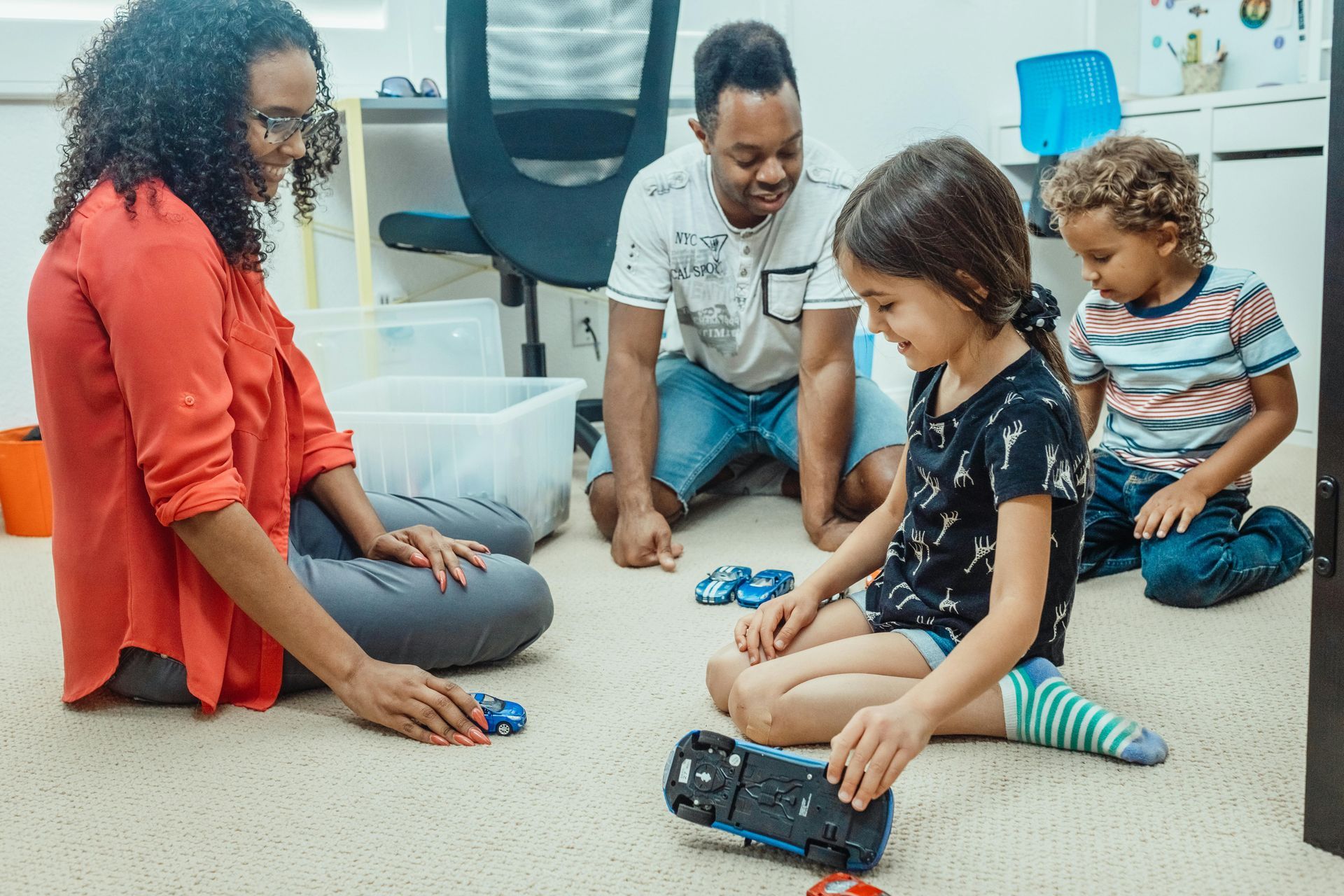
A Journey from Uncertainty to Hope When a child enters the foster care system, it's often because a home becomes a place of instability. In these moments, the world becomes confusing and overwhelming for a child. However, while foster care often begins in crisis, it can also mark the start of a healing journey filled with support, compassion, and second chances. This article explores what happens when a child enters foster care—from that first phone call to the path toward permanency. And most importantly, it reminds us that behind every placement is a real child hoping to feel safe, seen, and loved. The First Step: A Call for Help It all begins with concern. Someone—a teacher, a neighbor, a doctor, or a family member—sees something that doesn’t sit right. Maybe it’s a child’s fearful behavior, or conversations that hint at danger. They report it to Child Protective Services (CPS). Once a report is made, CPS investigates. If they find that a child is in immediate danger or living in conditions that are unsafe, they may decide that removal from the home is necessary. This moment is heartbreaking. For the child, it’s confusing and scary. For the parent, it’s painful. But the goal is to protect. The Removal: A Child's World Changes If a child must be removed from their home, a caseworker or law enforcement official will be present. Depending on the situation, this may happen during the day at school or daycare, or in the evening at home. The child may leave with only the clothes on their back or a few belongings hastily packed in a bag. They might not understand what’s happening at all. And in that moment, they lose not just their home, but often their sense of normal. This is why compassion matters so much. From the very beginning, foster care workers, emergency caregivers, and first responders have an opportunity to treat children with kindness and dignity during what might be the scariest day of their lives. Emergency Shelter or Foster Home Placement Once removed, the child is placed in a safe environment. This could be: A licensed foster home A relative’s home (kinship care) A group home or shelter (in less common or emergency) The goal is always to place the child with someone familiar—a grandparent, aunt, or family friend—if it’s safe and feasible. Studies show that children placed with relatives experience less trauma and adjust more quickly. When that's not possible, foster families step in. These are trained, licensed individuals who open their hearts and homes to children in need. They provide not just a roof and meals, but emotional comfort, stability, and the day-to-day care a child needs to begin healing. The First Days in Foster Care The first few days are a whirlwind. For the child, everything is unfamiliar: the house, the food, the people, the rules, the smell of laundry or the sounds of the neighborhood. It may take days or weeks for the child to feel even a little bit safe. Foster parents try to ease the transition by offering: A warm bed and clean clothes Favorite foods or snacks Age-appropriate toys or books Patience, routine, and empathy Caseworkers also step in during this time, explaining what’s happening in language the child can understand. A court-appointed guardian or child advocate may be assigned to represent the child’s best interests. Most importantly, children are told they are not to blame. Because so many carry guilt and shame for what’s happened to them or their families. Medical, Emotional, and Educational Support Soon after placement, the child receives a full evaluation to assess their: Physical health Mental and emotional well-being Developmental and educational needs Many foster children come into care with unaddressed medical issues or trauma. Some have fallen behind in school due to instability at home. Others may have special needs that were never diagnosed or treated. Foster care gives them access to services they may never have had before, such as: Therapy and counseling Tutoring or special education support Medical and dental care Trauma-informed programs Every piece of this puzzle helps a child feel whole again. It says: You matter. We see you. We’re here to help you heal. The Legal Side: Court Hearings and Family Plans While the child is settling into their foster home, the legal system begins its process. A judge will review the circumstances of the removal and decide on the next steps. The biological parents are usually given a case plan, a specific list of things they need to do to regain custody. This might include: Attending parenting classes Going to counseling or rehab Securing stable housing or employment Participating in supervised visits with their child The court reviews progress every few months. The primary goal of foster care, whenever possible, is reunification—rebuilding a safe and healthy relationship between the child and their family. Sometimes, parents make the changes needed. Sometimes they don’t. And when reunification isn’t possible, the focus shifts to finding a permanent home through adoption, legal guardianship, or long-term foster care. Building Bonds in Foster Care Foster care isn't just about surviving—it’s about connecting. As time passes, children often begin to form meaningful relationships with their foster families. They may celebrate birthdays, learn to ride a bike, or experience their first safe holiday. Even in a temporary home, love can grow. Foster parents play a critical role in helping children: Trust adults again Develop positive routines Learn coping skills Heal from trauma These bonds can leave lasting impressions—even if the child eventually returns home or moves on. Many foster children stay in touch with former foster families for life. Education and Extracurriculars Children in foster care are entitled to continue their education and participate in after-school activities, sports, arts, and social events. These experiences help kids feel like kids again. With support from their foster families and case workers, they might: Join a soccer team Play in the school band Attend prom Go on field trips Apply to college or trade school Foster care is not about limiting possibilities—it’s about restoring them. Aging Out of Foster Care For youth who aren’t reunited or adopted by age 18 (or 21 in some states), they “age out” of the system. But that doesn’t mean the support ends. Many states now offer extended foster care programs, which help young adults: Attending college or trade school Learning life skills Secure housing and employment Access to mental health services Programs like this recognize that turning 18 doesn’t make a child suddenly ready for adult life, especially one who’s endured trauma. The goal is to launch them into independence with dignity and support. So, What Happens When a Kid Goes Into Foster Care? Here’s what happens: A child is protected. A family is given the chance to heal. A system of compassionate adults steps in. New routines, relationships, and opportunities begin to form. Healing begins—even if slowly. Foster care isn’t perfect. There are not enough foster homes. However, every day, there are victories. A child who smiles again. A teen who finds a mentor. A family that reunites stronger than ever. How You Can Help You don’t have to be a foster parent to make a difference. Here are some ways you can support children in care: Become a CASA or guardian ad litem (court advocate) Donate backpacks, clothes, or school supplies Volunteer at a foster care nonprofit Support foster parents in your community Spread awareness by sharing facts and stories If you’re feeling called to do more, consider becoming a foster parent. It’s a big step—but one that can change a child’s life, and yours. Final Thoughts: From Surviving to Thriving When a child enters foster care, it marks a moment of deep loss—but also the beginning of hope. While no system can undo the harm or restore what was lost, foster care can provide what every child deserves: a chance to feel safe, to be seen, and to believe in their future. So yes, foster care starts with a crisis. But with love, support, and the right people around them, children in care can do more than survive—they can thrive. And that, in the end, is what every child deserves. Help caregivers provide loving homes for children in need. Your donation makes a difference today.
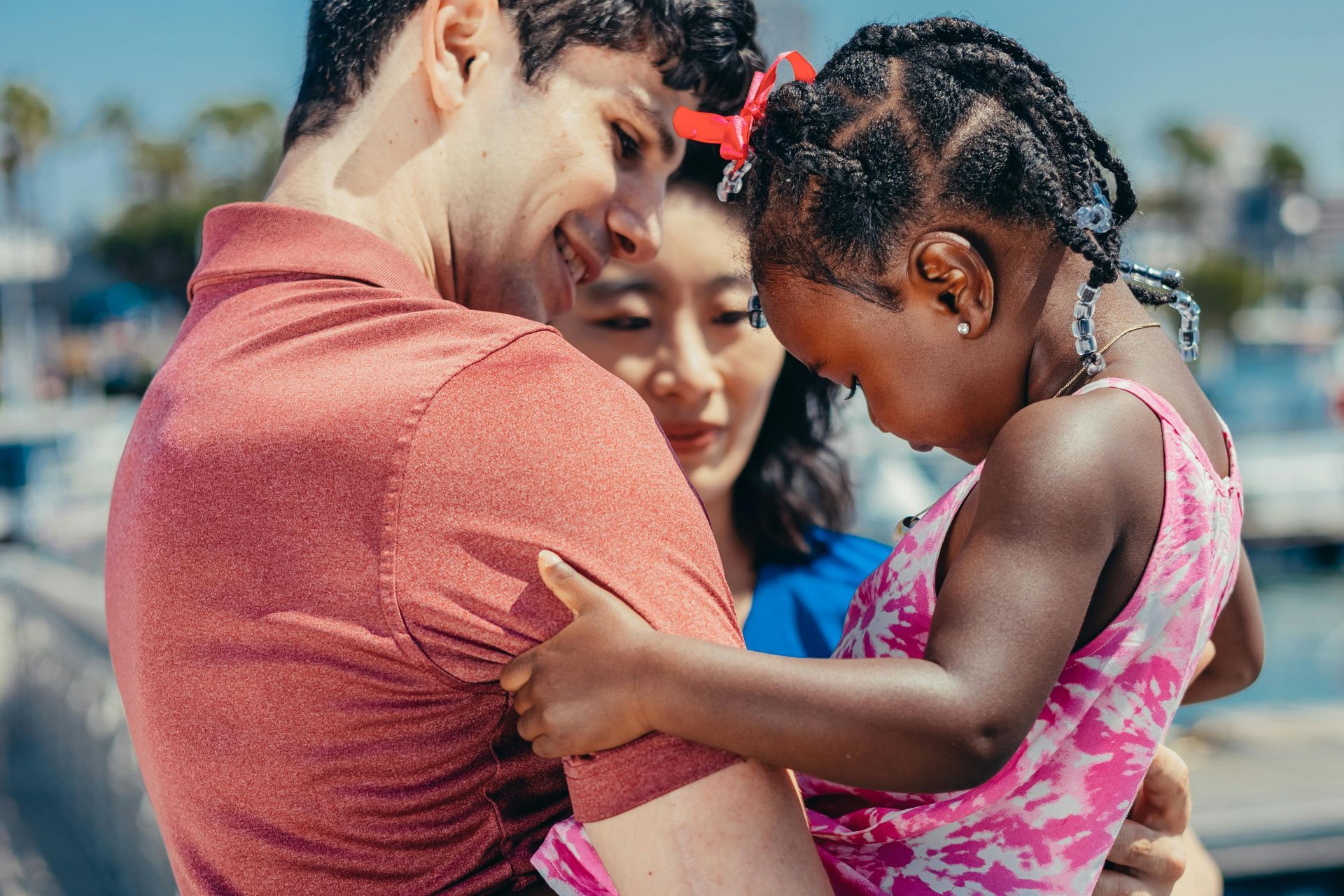
When you hear the phrase “foster care child,” what comes to mind? For some, it's a vague image of a child who doesn’t live with their parents. For others, it's a term they’ve heard in passing on the news or in movies but never fully understood. The truth is, behind every foster care child is a story. A story of resilience, of challenge, of hope — and often, a story that begins with pain but doesn’t have to end there. In this article, we’ll explore what a foster care child is, why children enter the system, what their experiences might look like, and how we — as a community — can better support them. Whether you’re someone considering foster parenting, an educator, or simply a curious and compassionate person, this guide is for you. Understanding the Basics: What Is Foster Care? Foster care is a system in which a child who cannot safely live with their biological family is placed in a temporary home with a licensed caregiver, often called a foster parent. The goal is to provide the child with safety, stability, and support during a time of crisis or transition. A foster care child, then, is any child or teenager living in this temporary arrangement, not because of anything they’ve done wrong, but because the environment they came from was not safe or stable enough to meet their needs. Why Do Children Enter Foster Care? Children are placed in foster care for a variety of reasons, and it's important to understand that these situations are often complex. Here are some of the most common reasons: 1. Abuse or Neglect This is one of the leading causes. If a child is experiencing physical, emotional abuse — or severe neglect — child protective services may intervene to remove the child and place them in a safer environment. 2. Parental Substance Abuse Substance addiction can make it difficult or even dangerous for parents to care for their children. In these cases, children may be removed to ensure they are not exposed to harmful environments. 3. Mental Health Challenges Parents with untreated mental health disorders may struggle to provide consistent care. In some situations, the child may also have mental health needs that require specialized care outside the home. 4. Domestic Violence Even if the child is not the direct victim, witnessing violence in the home is deeply traumatic. Foster care can offer safety and a more peaceful environment. 5. Incarceration When a child's only parent or guardian is incarcerated and no relatives can step in, foster care becomes a temporary solution. 6. Death or Illness Tragedy can strike any family. When a parent becomes seriously ill or passes away, and there are no other caretakers, children may enter foster care. 7. Homelessness or Extreme Poverty Sometimes, families love their children deeply but simply can’t provide the basic necessities due to extreme financial hardship or housing instability. Who Are Foster Care Children? Foster care children are just like any other children — they dream, they laugh, they play, and they long for love and stability. But many have experienced trauma, instability, or loss. Their journey is not defined by where they came from, but by the support and care they receive along the way. Some facts about foster care children: They range in age from infants to teenagers, with the average age being around 8. Some are part of sibling groups who hope to stay together. Many have experienced multiple placements, moving from one home to another. Some may have emotional or developmental needs due to early-life trauma. Many are still connected to their birth families and hope to be reunited one day. What Does Life Look Like for a Foster Child? Every foster child’s experience is unique, depending on their background, age, and placement. But there are some common threads: 1. Frequent Change Some children may move multiple times due to issues with placements, lack of resources, or the challenges of matching them with the right family. Each move can be disruptive and emotionally exhausting. 2. Navigating the Unknown Foster children often live with uncertainty — not knowing where they’ll live next, when they’ll see their parents again, or whether they’ll stay in the same school. These unknowns can be deeply unsettling. 3. Loss and Grief Even if the home was unsafe, being removed from it is still a loss. Children grieve not only their parents but also their routines, belongings, pets, and communities. 4. Moments of Hope During challenges, many children experience moments of kindness and connection that change their lives — a warm foster home, a caring teacher, a stable routine, a holiday celebration. These experiences are powerful. What Is the Goal of Foster Care? The main goal of foster care is reunification. That means working with the biological family to address the issues that led to the child’s removal so the family can be safely reunited. But that’s not always possible. If it’s determined that a child cannot return to their biological family, other long-term solutions may include: Adoption Guardianship by a relative Long-term foster care, particularly for older youth nearing adulthood Regardless of the outcome, the system aims to ensure permanency, stability, and well-being for each child. The Role of Foster Parents Foster parents are everyday people who open their homes and hearts to children in need. They receive training, support, and guidance — but most importantly, they provide: Structure Safety Compassion Guidance Great foster parents help children heal from trauma, trust again, and thrive in a loving environment. They also work closely with caseworkers, therapists, and often the birth family to help support reunification efforts whenever possible. Common Misconceptions About Foster Care Children Let’s take a moment to address some myths: Myth 1: Foster kids are “bad” or “troubled.” Truth: Foster children are not bad — they are often reacting to trauma. With love and support, they thrive just like any other child. Myth 2: They’re all orphans. Truth: Most foster children have living parents. They’re in care due to unsafe situations, not because their parents passed away. Myth 3: They’re too damaged to help. Truth: Every child has the ability to grow, heal, and succeed with the right environment and support. A Real Story: A Glimpse of Possibility Consider the story of Anthony, a teen who entered foster care at age 13 after years of instability at home. He was quiet, withdrawn, and behind in school. But when he moved in with a foster family who welcomed him with open arms, everything began to change. They encouraged him to join the basketball team, supported his tutoring, and listened to him when he was ready to talk. Today, Anthony is a college freshman studying social work, and he dreams of one day helping other kids like him. His story is just one of thousands, and proof that foster care can change lives. How Can You Help? You don’t need to become a foster parent to make a difference in the life of a foster care child. Here are ways to get involved: Mentor a youth in care through a local nonprofit. Donate clothing, books, or school supplies. Support organizations that provide training and resources to foster families. Advocate for child welfare policy improvements. Educate others about what foster care really is. Even a single gesture — a backpack for school, a holiday gift, a word of encouragement — can remind a child they are seen and valued. So, What Is a Foster Care Child? A foster care child is a child who needs us. They are not defined by where they came from, but by who they can become with love, safety, and opportunity. They are strong, courageous, and full of potential — just waiting for the right person to believe in them. And perhaps that person could be you. Because at the end of the day, a foster care child is simply a child who deserves a chance, and with your support, they can have it. Help caregivers provide loving homes for children in need. Your donation makes a difference today.
